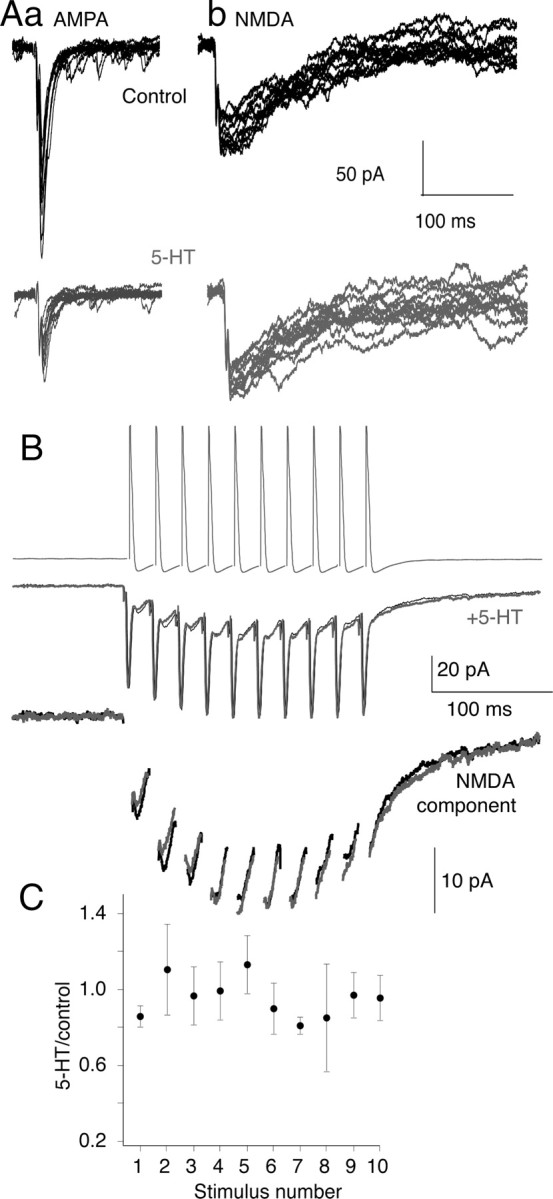Figure 9.

5-HT differentially modifies the amplitude of NMDA- and AMPA-mediated synaptic responses. A, Whole-cell postsynaptic voltage-clamp recording of control EPSCs, evoked by 12 sequential stimulations of a paired presynaptic reticulospinal axon. Aa, Responses in control to show AMPA receptor-mediated EPSCs (black, top). Bottom trace (gray), After application of 5-HT (0.6 μm). Ab, Responses recorded in Mg2+-free Ringer's and CNQX (5 μm) to reveal the NMDA component. Bottom traces (gray), After addition of 5-HT (0.6 μm). 5-HT had no effect on the NMDA EPSC. B, Paired NMDA receptor EPSCs recorded in Mg2+-free Ringer's and CNQX (5 μm) evoked by trains of sequential presynaptic action potentials (50 Hz; 10 stimuli) in control (black) and in 5-HT (600 nm) (gray). The EPSCs are shown with an expanded y-axis in the bottom traces after removal of the electrical component for clarity. C, Mean amplitudes of the evoked synaptic responses in the train. Each point is the mean (±SEM) of each sequential EPSC recorded as the peak amplitude after the electrical component (n = 3 preparations). 5-HT had no effect on the amplitude of the NMDA receptor-mediated EPSCs throughout the stimulus train.
